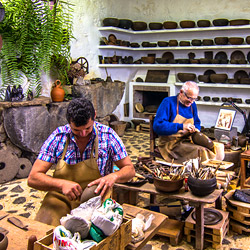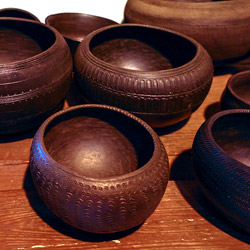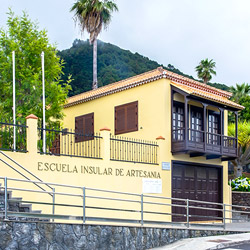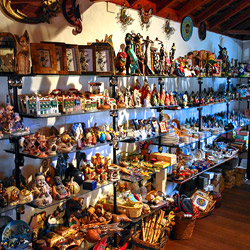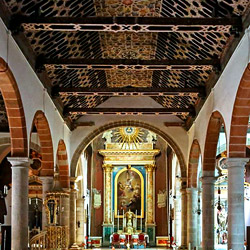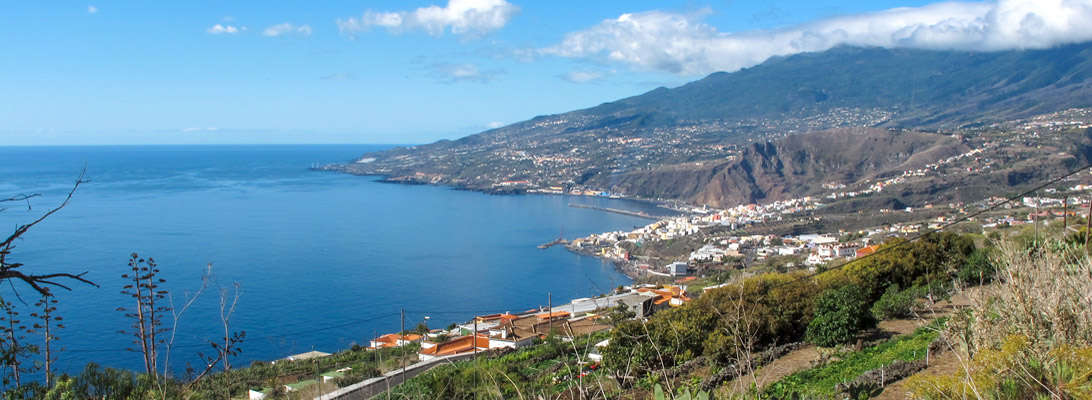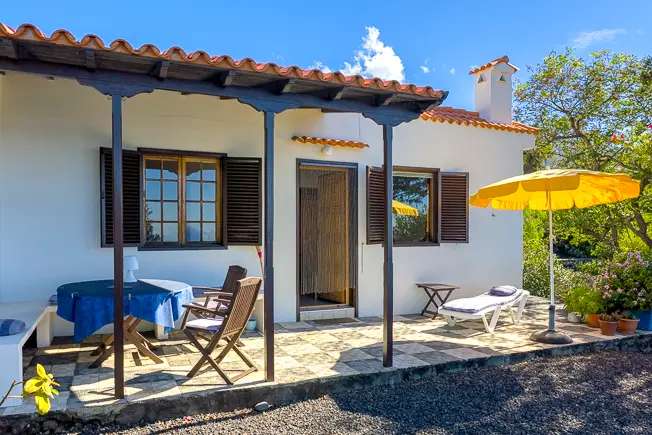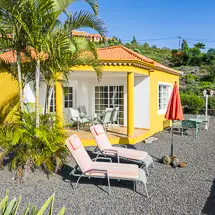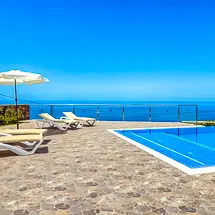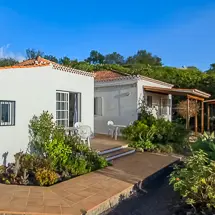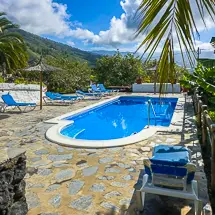La Palma's handicrafts include both the Stone Age traditions of the Guanches and the skills later acquired on the island. Today, handicrafts on La Palma are more popular than ever and not only among tourists. The island government keeps a list of recognized craftsmen. In selected factories, tourists can not only buy quality products of Palmeric craftsmanship but also inform themselves about their production, be it ceramics and pottery (especially in the ceramics workshop "El Molino" in El Mazo), basket weaving, embroidery, silk production or the loving production of the coveted puro cigars.
El Mazo School of Arts and Crafts
Official sales outlets for arts and crafts include the Mazo School of Arts and Crafts and the Casa del Quinto in Los Sauces. Argual is also home to the popular Artefuego glassblowing workshop, where handmade glassware can be purchased as a souvenir typical of the island (live demonstrations on Sundays from 10:00 to 14:00).
Many international artists have settled on La Palma, including illustrator and children's book author Janosch. Paintings and works of art can be bought at markets, craft shops, and gift shops.
The Mudejar style
In Spain, Muslims who were not expelled and who benefited from their craftsmanship, for example, oriental woodcarvings, many buildings, churches, and palaces, were called Mudejares during the Reconquista, the Christian reconquest by the Moors (1085-1492).
The Mudejar style is characterized by very fine ornamentation and few figurative representations (as is customary in Islamic culture). The rich sugar barons of the 16th and 17th centuries on La Palma liked to decorate their houses or churches with the Mudejar-style coffered wooden ceilings, which were highly prized at the time. Therefore, on La Palma even the old churches in small villages are equipped with magnificent wood carvings.







